7 Common Symptoms of a Bad Alternator
Understanding the symptoms of a bad alternator is essential for any vehicle owner. This informative article delves into the seven most common signs indicating alternator issues, a crucial component in your vehicle’s electrical system. From dimming headlights and electrical malfunctions to a dead battery and engine stalling, we cover the key indicators your alternator may fail. This guide helps diagnose alternator problems and provides insights into the importance of regular maintenance to prevent vehicle breakdowns. Whether you’re a seasoned driver or new to car care, our expert tips and advice will ensure you stay informed about this vital aspect of vehicle health, potentially saving you from costly repairs.
The most common symptoms of a failing alternator are:
- The battery light stays on
- Random warning lights on the dashboard
- Intermittent electrical issues
- Car dies while driving.
- The car won’t restart
- The battery won’t charge and eventually dies.
- The transmission may get stuck in limp mode and won’t change gears.
Common causes that lead to these problems are:
- a bad diode,
- bad voltage regulator,
- worn brushes,
- Bearings are going out or getting seized.
Regardless of why your alternator fails, the warning signs are often there before an alternator fails.
Bad Alternator Symptoms
This article will review the common symptoms of a bad alternator.
1. Battery light
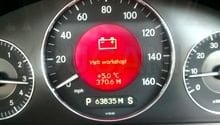
The illuminated battery light on the instrument cluster is the first sign to the driver that there is an issue with the charging system.
When the battery light is displayed, it is best to give it attention as soon as possible. If the alternator fails, your car will only run on the battery for about 10-20 minutes before it turns off.
2. Lack of power or Limp Mode
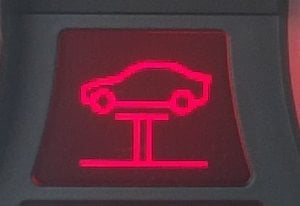
If there is a complete loss of power, there is a good chance that the alternator failed. Especially if the battery warning light or alternator symbol appears on your instrument cluster and your car dies a few minutes later.
To check for a complete loss of power, turn on your headlight, dome light, radio, and so on to check for power. If there is no power, your alternator has failed. When this happens, the car may start and run if jump-started, but the car dies as soon as the jumper cables are disconnected.
3. Noise
A failing alternator will start to make a loud whining noise at idle, and the whining noise will increase with engine speed. A bad alternator sound can be confused with a bad power steer pump noise. How do you tell bad alternator noise vs. power steering noise?
- The alternator noise is not as loud as the power steering pump.
- Alternator noise increases when engine RPMs change.
- Power steering noise increases when the steering wheel is turned.
- A bad alternator will have a burning smell. The power steering pump does not.
Also, an alternator can make a growling noise due to bearings inside the alternator. If the bearings start to fail, eventually, the alternator itself will fail.
4. Broken Serpentine belt

The drive belt is responsible for turning the pulley on the alternator. Without the drive belt, the alternator cannot charge the battery.
Sometimes, a slipping belt can cause a decrease in power, or a bad drive belt tensioner can also cause a belt to slip. Also, cracked, brittle, torn, and contaminated belts due to oil or power steering fluid can decrease power. Moreover, you will sometimes lose power if the drive belt snaps in half.
5. Burning Smell

Your alternator is seized if you smell a burning smell that smells like rubber is burning. Usually, when this happens, the belt will snap and burn off completely.
The alternator needs to be replaced with a new one, and most likely, it isn’t easy to rebuild the alternator at this point. Moreover, you may want to inspect the drive belt tensioner, drive belt pulley, and so on for drive belt rubber that may leave residue behind.
I recommend cleaning the tensioner and pulley with brake or carburetor cleaner if there are any. Furthermore, inspect the tensioner and pulley by turning them, ensuring a seized alternator didn’t damage it.
6. Bearing Issues

On high-mileage vehicles, it is common for the bearings to fail. Alternator bearings take time to wear out; typically, you will get plenty of warning signs. Common symptoms that the alternator bearings are wearing include a squealing sound that may get louder as the engine RPMs increase.
A vehicle parked for an extended time can cause the alternator bearings to bind or seize. When you start the car, you will notice a grinding noise from the alternator due to a bad bearing. In rare cases where the alternator with bad bearings is ignored for so long, it can cause the alternator to catch fire due to the bearing’s overheating.
Symptoms of a bad alternator can vary between different makes and models. For example, symptoms of a bad alternator may include low voltage fault codes on various control units. The airbag / SRS light on the instrument cluster turns on for no apparent reason and with no accident. A vehicle is going into limp mode. Automatic Transmission may get stuck on 1st, 2nd, or 3rd gear due to a bad alternator.
7. Bad Alternator or Battery

The main components of the charging system include the alternator, alternator wires, battery, and voltage regulator. Sometimes, it can be difficult to tell if you have a bad battery or alternator.
Troubleshooting alternator problems
One method to test the alternator is to perform a charging system test. This is a common test performed at dealerships and auto repair shops.
Testing the alternator and charging system is straightforward if you have a Charging System Analyzer. A charging system test will help you determine if your alternator is failing or has low output. It will not cause alternator problems such as worn bearings.
Check alternator voltage
Modern vehicles will turn on the battery warning if the voltage is low. This can be common at a startup, especially during winter or if the secondary battery is not fully charged (when applicable).
One of the first recommendations is to check the battery voltage. With the engine off, the battery voltage should have a minimum voltage of 12.2 volts and a maximum voltage of 12.6 volts. However, if your vehicle has recently been running, the battery voltage can stay above 12.6 due to surface charge. To remove the surface charge, turn on the headlights for 30 seconds, then turn it off. Recheck the battery voltage; if the battery voltage is good, then move on to the next step.

The alternator is responsible for charging the battery and bringing it up to 100% charge. Use a multimeter and set it to voltage.
With the engine running, check the battery voltage. The battery voltage should be around 13.5 volts to 14.5 volts. The voltage should not be below 13.5 volts, which means you have a weak alternator, and over 14.5 volts is overcharging. If the voltage is not within range, move on to the next step below.
Check charging system wires.
A bad alternator wire or corroded battery terminal can prevent the current from flowing properly. Use a multimeter and set it to the ohm setting. Check the ohms from the wire from the alternator 12-volt terminal to the battery.
Resistance should be less than 0.5 ohms. Anything greater means there is high resistance. If you get a zero reading, there is an opening in the wire. Sometimes, there is a fusible link between the alternator wires and the battery. Check the fusible link and make sure it is not blown. If the fusible link is not blown, check the condition of the wire.
Check alternator bearings
An experienced mechanic will tell if a car has bad alternator bearings just by listening to the alternator. If you suspect your alternator bearings are going out, stop by a trusted auto mechanic and ask them to listen to your alternator while the engine is running.
The other option would be to remove the serpentine belt/drive belt that turns the alternator and start the car. Does the noise go away? If the noise disappears when the alternator belt is removed, you know the alternator is the culprit. Also, check for play at the alternator pulley for excessive play.
Reading Faut Codes
Reading with a YOUCANIC Full System Scanner can help you determine the problem in your charging system. It can read and clear codes from all systems, perform bi-directional tests, and many more.
Repair Cost
The typical cost to replace the alternator at the mechanic varies between $380-$600 for an aftermarket alternator. Replacing the alternator with an OEM can cost between $600 and $1300, depending on the make. The DIY cost to replace the alternator yourself is typically between $100 and $200 for the alternator. Aftermarket alternators can be purchased online for any car if you want to save money.
Don’t ignore the symptoms of a bad alternator. If the alternator fails, not only can your car catch fire, but most commonly, you will get stranded on the side of the road. The serpentine belt may also break, causing additional damage. We hope you find the 7 Common Symptoms of a Bad Alternator guide helpful. Check these troubleshooting and repair guides for more help on your vehicle.



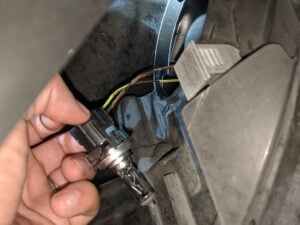

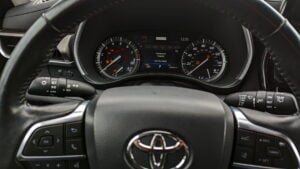

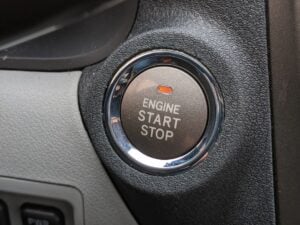

It’s nice that you pointed out how there is a good chance that the alternator has failed if there is a complete loss of power. I noticed that our car suddenly started lacking power yesterday and I think it might be due to a faulty alternator. I do not know how to fix this, so I should probably ask an auto repair expert to check it out.